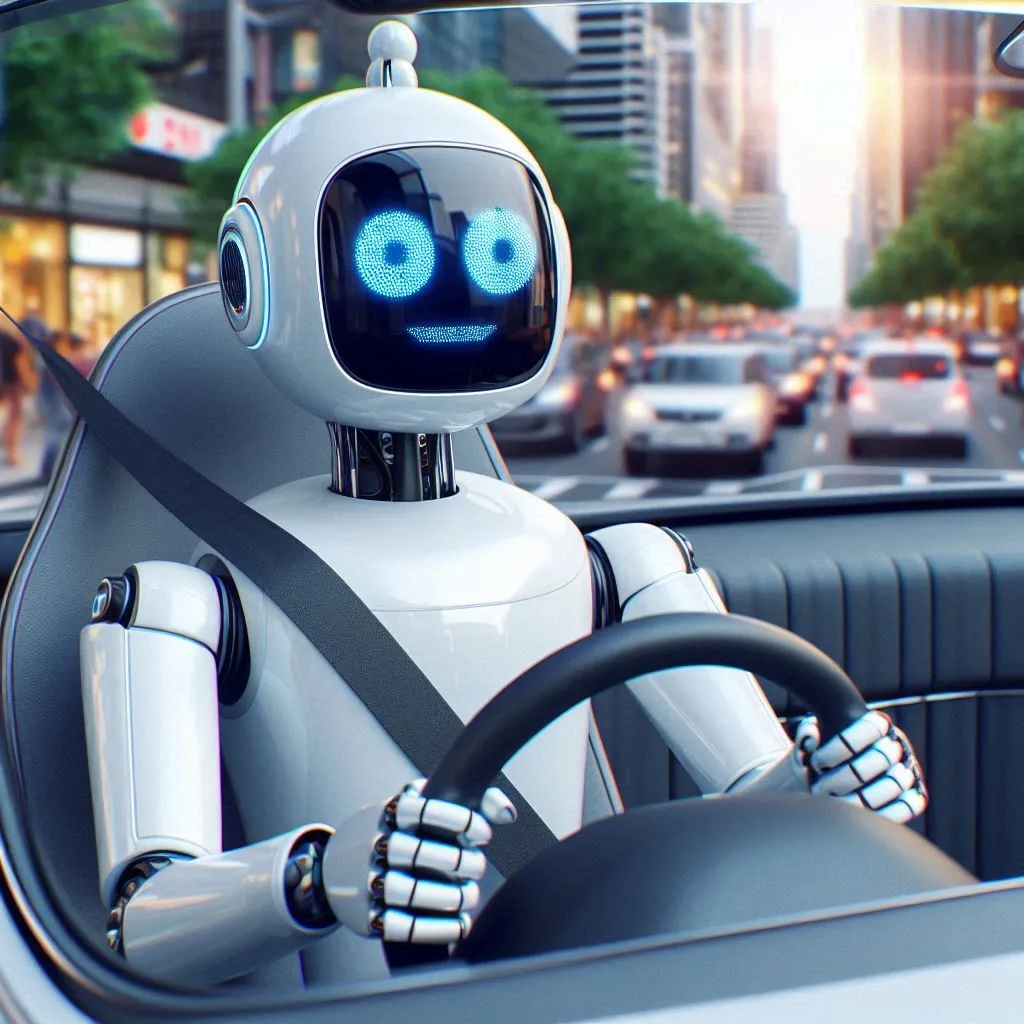Self-driving cars, also known as autopilot cars, are one of the most revolutionary developments of the 21st century. Fueled by advances in artificial intelligence (AI), these vehicles promise to transform not just transportation but also how society interacts with technology. This article will dive deep into the underlying technology that powers these vehicles, the current state of the industry, and how AI will shape the future of autonomous driving. We will also provide insights for programmers on how they can contribute to this rapidly evolving field.
The Birth of Autopilot Cars: A Brief Overview
Autonomous vehicles have their roots in early attempts at driver-assist systems. Cruise control, introduced in the 1950s, allowed drivers to maintain a steady speed without constant pressure on the gas pedal. However, it wasn’t until the last decade that true self-driving cars, powered by AI, started gaining traction.
At the core of autopilot cars is AI technology that can “sense” the environment, process data, and make real-time decisions. Companies like Tesla, Google’s Waymo, and Uber are pioneers in this space, with Tesla’s Autopilot and Waymo’s self-driving taxis being prime examples of the technology in action.
How Do Autopilot Cars Work?
Autopilot cars rely on a mix of sensors, AI-driven algorithms, and real-time data processing. Here’s a breakdown of how they function:
1. Sensors and Hardware Components
- Cameras: These provide a real-time feed of the vehicle’s surroundings.
- LiDAR (Light Detection and Ranging): This system emits laser pulses to map the environment in 3D. While Tesla relies mostly on cameras, many companies still use LiDAR to enhance accuracy.
- Radar: Radar sensors measure the speed and distance of nearby objects, ensuring that the vehicle can avoid collisions.
- Ultrasonic Sensors: These are used for detecting nearby objects during slow speeds, such as in parking scenarios.
2. Perception Layer
The perception system translates raw data from sensors into useful information. For example, cameras can identify other cars, pedestrians, road signs, and lane markings. AI algorithms use this data to create a map of the surroundings, similar to how a human driver processes visual cues.
3. Decision-Making Algorithms
Once the car has a clear understanding of its environment, it uses AI-powered decision-making models to determine its next actions. These decisions involve interpreting traffic laws, avoiding obstacles, and planning routes. AI algorithms play a critical role in ensuring that the car behaves safely in complex environments.
4. Control Systems
The car’s control system then translates decisions into physical actions, such as accelerating, braking, or steering. The system communicates with the vehicle’s actuators to execute these commands smoothly.
5. Communication with Other Systems
Autonomous vehicles are also designed to communicate with other systems, such as traffic lights, other vehicles, or cloud-based services. V2X (Vehicle-to-Everything) communication ensures that autopilot cars can operate in a connected environment, sharing data for better traffic management and safety.
Levels of Autonomy
Autonomous driving is often classified into six levels, from Level 0 (no automation) to Level 5 (fully autonomous). Most autopilot cars today operate at Level 2 or 3:
- Level 1: Driver-assist features like cruise control and lane-keeping.
- Level 2: Partial automation. The car can control both steering and acceleration but requires constant human monitoring.
- Level 3: Conditional automation. The car can handle most driving tasks but will need human intervention in certain conditions.
- Level 4: High automation. The car can operate independently in most environments but may require human control in rare situations.
- Level 5: Full automation. The vehicle is capable of driving itself without any human input.
AI in Autopilot Cars
The AI behind autonomous vehicles is built on several foundational technologies:
1. Machine Learning (ML)
Self-driving cars use machine learning models to learn from vast amounts of data. They process information from road conditions, other drivers’ behaviors, and even accident reports to improve their algorithms. Deep learning, a subset of ML, is commonly used to help cars recognize objects and interpret their surroundings.
2. Neural Networks
Neural networks mimic the human brain’s functioning, helping AI systems in vehicles make decisions. These networks process images from cameras and sensor data to identify objects and predict future movements of pedestrians or other vehicles.
3. Reinforcement Learning
Reinforcement learning involves training AI through a reward system. The vehicle’s AI receives “rewards” for successfully completing tasks, such as avoiding a collision or following traffic laws. Over time, this method enables more sophisticated decision-making.
4. Computer Vision
Autonomous cars rely heavily on computer vision for object detection and recognition. Advanced AI systems process visual data from cameras and identify lane markings, vehicles, pedestrians, and traffic signs.
Challenges Facing Autopilot Cars
While the technology is promising, there are several challenges to address before autopilot cars can achieve widespread adoption:
1. Edge Cases
Autonomous vehicles still struggle with “edge cases,” which are rare but critical situations that fall outside the typical driving environment, such as unexpected road closures or erratic behavior from other drivers.
2. Ethical Dilemmas
The ethical programming of AI is another challenge. How should a car react in situations where a crash seems inevitable? AI must be taught to make ethical decisions, but there is no clear consensus on what is “right” in life-or-death situations.
3. Regulation and Legislation
Governments and regulatory bodies must catch up with the technology. Clear guidelines on liability, insurance, and safety standards are essential to ensuring the safe deployment of autopilot cars.
4. Cybersecurity Risks
Connected vehicles are vulnerable to hacking. Ensuring that AI systems in autopilot cars are secure from cyberattacks is crucial for preventing accidents and protecting user data.
The Future of Autopilot Cars
The future of autonomous vehicles is both exciting and complex. Here’s what we can expect in the coming years:
1. Full Autonomy (Level 5)
While most companies aim to reach Level 5 autonomy, this is still a long way off. The jump from Level 4 (high automation) to Level 5 will require substantial advances in AI, sensor technology, and safety measures.
2. Improved AI Models
Future AI models will be more robust, capable of handling the complexity of city driving as well as unpredictable environments. With better training data and more sophisticated algorithms, self-driving cars will become even safer and more efficient.
3. Integration with Smart Cities
Autonomous vehicles will likely become a key part of smart cities, where data from roads, traffic systems, and public transport will interact seamlessly. This integration can optimize traffic flow, reduce congestion, and improve overall mobility.
4. Shared Autonomy
We might also see a rise in shared autonomous vehicles (SAVs). These vehicles, owned by companies, will provide on-demand services, offering a more sustainable and cost-effective form of transportation.
A Guide for Programmers
For those interested in developing the AI systems behind autonomous vehicles, here are some key areas to focus on:
1. Machine Learning Frameworks
Familiarize yourself with ML frameworks such as TensorFlow and PyTorch. These tools are essential for training AI models used in perception, decision-making, and control systems.
2. Data Processing Skills
Master data processing techniques, especially when handling large datasets from sensors. Experience with Apache Kafka, Hadoop, or similar systems can be useful when dealing with real-time data streams from vehicles.
3. Reinforcement Learning
Learn reinforcement learning algorithms, which are commonly applied in autonomous vehicle navigation systems. Understanding frameworks like OpenAI Gym will give you an edge in developing smarter AI systems.
4. Computer Vision
Specialize in computer vision to develop systems that help vehicles “see” the road. Knowledge of OpenCV and YOLO (You Only Look Once) object detection models will be valuable in this area.
Conclusion: Autopilot cars are a rapidly growing technology that will reshape the way we think about transportation. AI is the driving force behind this revolution, enabling vehicles to make intelligent decisions, navigate complex environments, and ensure passenger safety. While challenges remain, the future of autonomous vehicles looks promising, with endless possibilities for innovation and advancement.
For those looking to get into the field, now is the perfect time. Whether you are a programmer or simply interested in technology, understanding how AI powers autopilot cars is crucial for staying ahead in this fast-moving industry.




